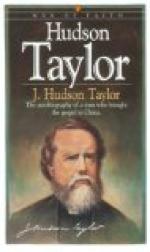How North and South Beacon again summon the Hudson yeomen from harvest fields to the defense of country, while Fort Putnam, still eloquent in her ruins, looks down upon the best drilled boys in the world at West Point. Further on Newburgh, Poughkeepsie and Kingston shake fraternal hands in the abiding trinity of Washington, Hamilton and Clinton, while northward rise the Ontioras where Rip Van Winkle slept, and woke to wonder at the happenings of twenty years.
What stories of silent valleys told by murmuring streams from the Berkshire Hills and far away fields where Stark and Ethan Allen triumphed. What tales of Cooper, where the Mohawk entwines her fingers with those of the Susquehanna, and poems of Longfellow, Bryant and Holmes, of Dwight, of Halleck and of Drake; ay, and of Yankee Doodle too, written at the Old Van Rensselaer House almost within a pebble-throw of the steamer as it approaches Albany. What a wonderful book of history and beauty, all to be read in one day’s journey!
* * *
Roll on! Roll on!
Thou river of the North! Tell thou
to all
The isles, tell thou to all the Continents
The grandeur of my land.
William Wallace.
* * *
The Hudson has often been styled “The Rhine of America.” There is, however, little of similarity and much of contrast. The Rhine from Dusseldorf to Manheim is only twelve hundred to fifteen hundred feet in breadth. The Hudson from New York to Albany averages more than five thousand feet from bank to bank. At Tappan Zee the Hudson is ten times as wide as the Rhine at any point above Cologne. At Bonn the Rhine is barely one-third of a mile, whereas the Hudson at Haverstraw Bay is over four miles in width. The average breadth of the Hudson from New York to Poughkeepsie is almost eight thousand feet.
The mountains of the Rhine also lack the imposing character of the Highlands. The far-famed Drachenfels, the Landskron, and the Stenzleburg are only seven hundred and fifty feet above the river; the Alteberg eight hundred, the Rosenau nine hundred, and the great Oelberg thirteen hundred and sixty-two. According to the latest United States Geological Survey the entire group of mountains at the northern gate of the Highlands is from fourteen hundred to sixteen hundred and twenty-five feet in height, not to speak of the Catskills from three thousand to almost four thousand feet in altitude.
It is not the fault of the Rhine with its nine hundred miles of rapid flow that it looks tame compared with the Hudson. Even the Mississippi, draining a valley three thousand miles in extent, looks insignificant at St. Louis or New Orleans contrasted with the Hudson at Tarrytown. The Hudson is in fact a vast estuary of the sea; the tide rises two feet at Albany and six inches at Troy. A professor of the Berlin University says: “You lack our castles but the Hudson is infinitely grander.” Thackeray, in “The Virginians,” gives the Hudson the verdict of beauty; and George William Curtis, comparing the Hudson with the rivers of the Old World, has gracefully said: “The Danube has in part glimpses of such grandeur, the Elbe has sometimes such delicately penciled effects, but no European river is so lordly in its bearing, none flows in such state to the sea.”




